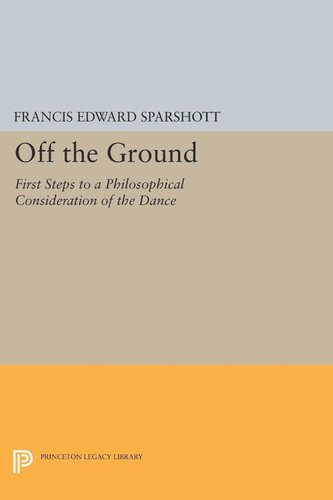

Most ebook files are in PDF format, so you can easily read them using various software such as Foxit Reader or directly on the Google Chrome browser.
Some ebook files are released by publishers in other formats such as .awz, .mobi, .epub, .fb2, etc. You may need to install specific software to read these formats on mobile/PC, such as Calibre.
Please read the tutorial at this link: https://ebookbell.com/faq
We offer FREE conversion to the popular formats you request; however, this may take some time. Therefore, right after payment, please email us, and we will try to provide the service as quickly as possible.
For some exceptional file formats or broken links (if any), please refrain from opening any disputes. Instead, email us first, and we will try to assist within a maximum of 6 hours.
EbookBell Team

0.0
0 reviewsWhat is dance, as seen from a philosopher's point of view? Why has dance played little part in traditional philosophies of the arts? And why do these philosophies of the arts take the form they do? The distinguished aesthetician Francis Sparshott subjects these questions to a thorough examination that takes into account all forms and aspects of dance, in art and in life, and brings them within the scope of a single discussion. By showing what is involved in deciding whether something is or is not dance, and by displaying the diversity of ways in which dance can be found meaningful, he provides a new sort of background for dance aesthetics and dance criticism. At the same time he makes a far-reaching contribution to the methodology of the philosophy of art and practice. In a witty and personal style that will be familiar to readers of his earlier books, Professor Sparshott makes a distinction between dance and its neighbors (such as work, sports, and games) and points out that it is more profoundly connected to questions of self-knowledge than the other arts. Dance differs from any of the fine arts in that it can be seen, not as the manipulation of a medium, but as self-transformation.
Originally published in 1988.
The Princeton Legacy Library uses the latest print-on-demand technology to again make available previously out-of-print books from the distinguished backlist of Princeton University Press. These editions preserve the original texts of these important books while presenting them in durable paperback and hardcover editions. The goal of the Princeton Legacy Library is to vastly increase access to the rich scholarly heritage found in the thousands of books published by Princeton University Press since its founding in 1905.